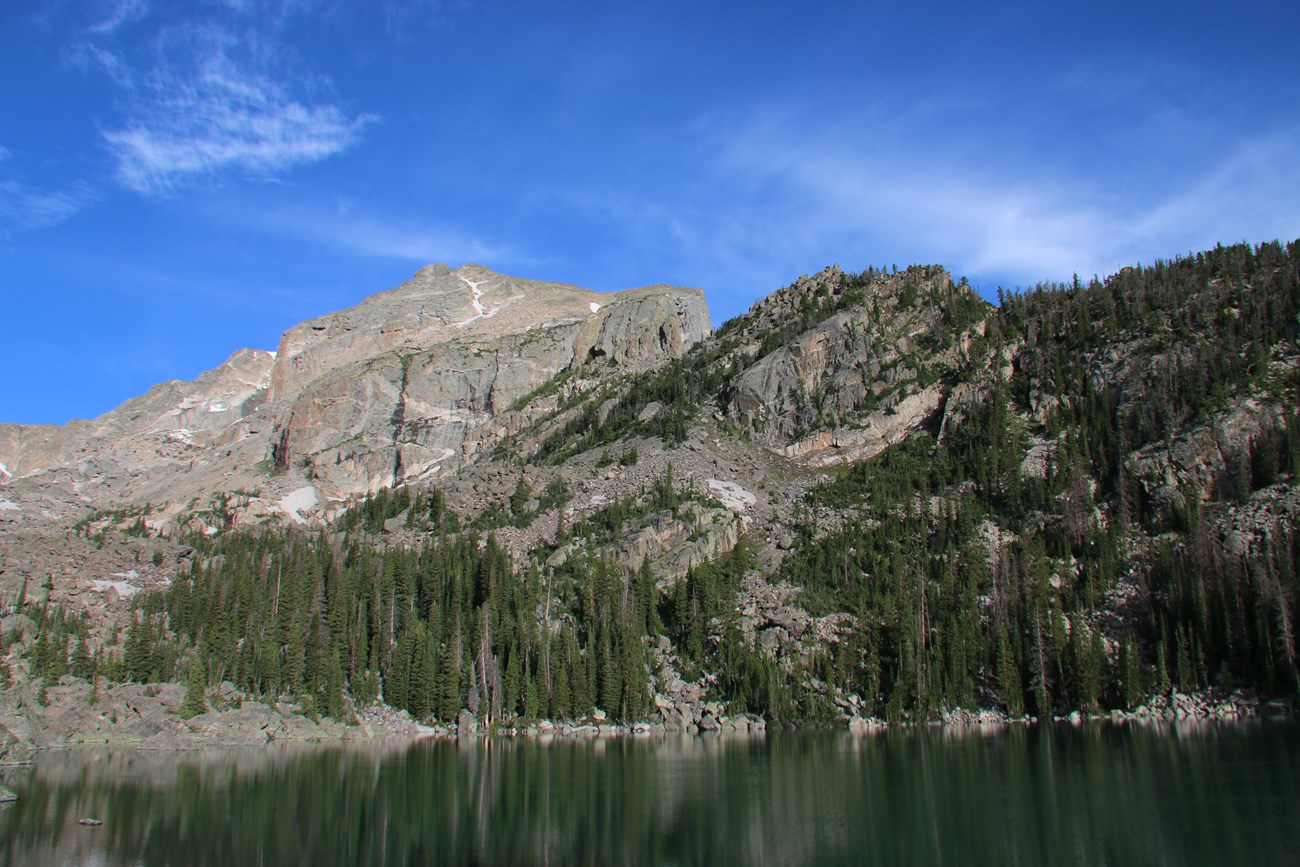
USGS Photo/M. Morris Chaos Canyon and Areas West of Lake Haiyaha Have ReopenedChaos Canyon and areas west of Lake Haiyaha have reopened to all users however, talus slopes and rocks in Chaos Canyon are unstable and may continue to slide much like any other similarly situated exposures in Rocky Mountain National Park. This is a popular area for bouldering. 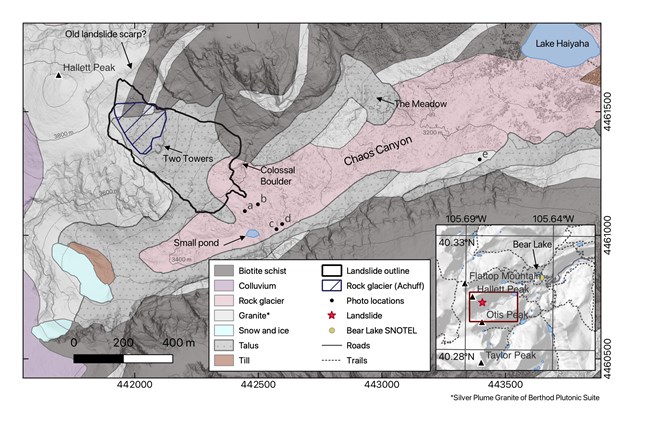
What Led to the Chaos Canyon Landslide?Following the landslide event, Rocky Mountain National Park staff have been collaborating with the NPS Geological Resource Division and United States Geological Survey (USGS) to investigate the potential causes of this slide and to learn more.
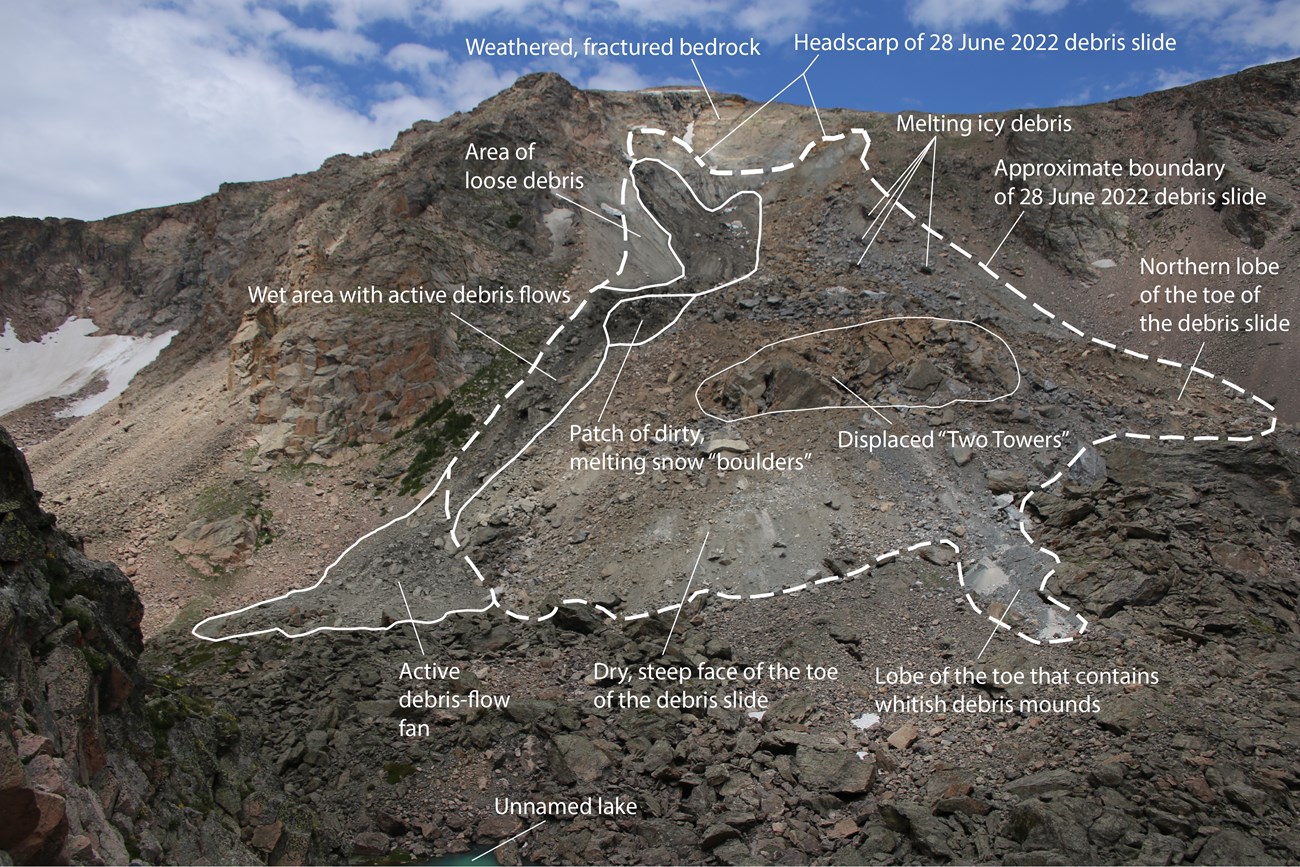
The volume of the slide was estimated to be 2.7 million cubic yards (2.1 cubic meters) of material which reached speeds of up to 11mph (5 meters/second) and slid on a surface ~260 feet (80 meters) deep. Why did the Color of Lake Haiyaha Change?
How Long will Lake Haiyaha be this Unique Color?
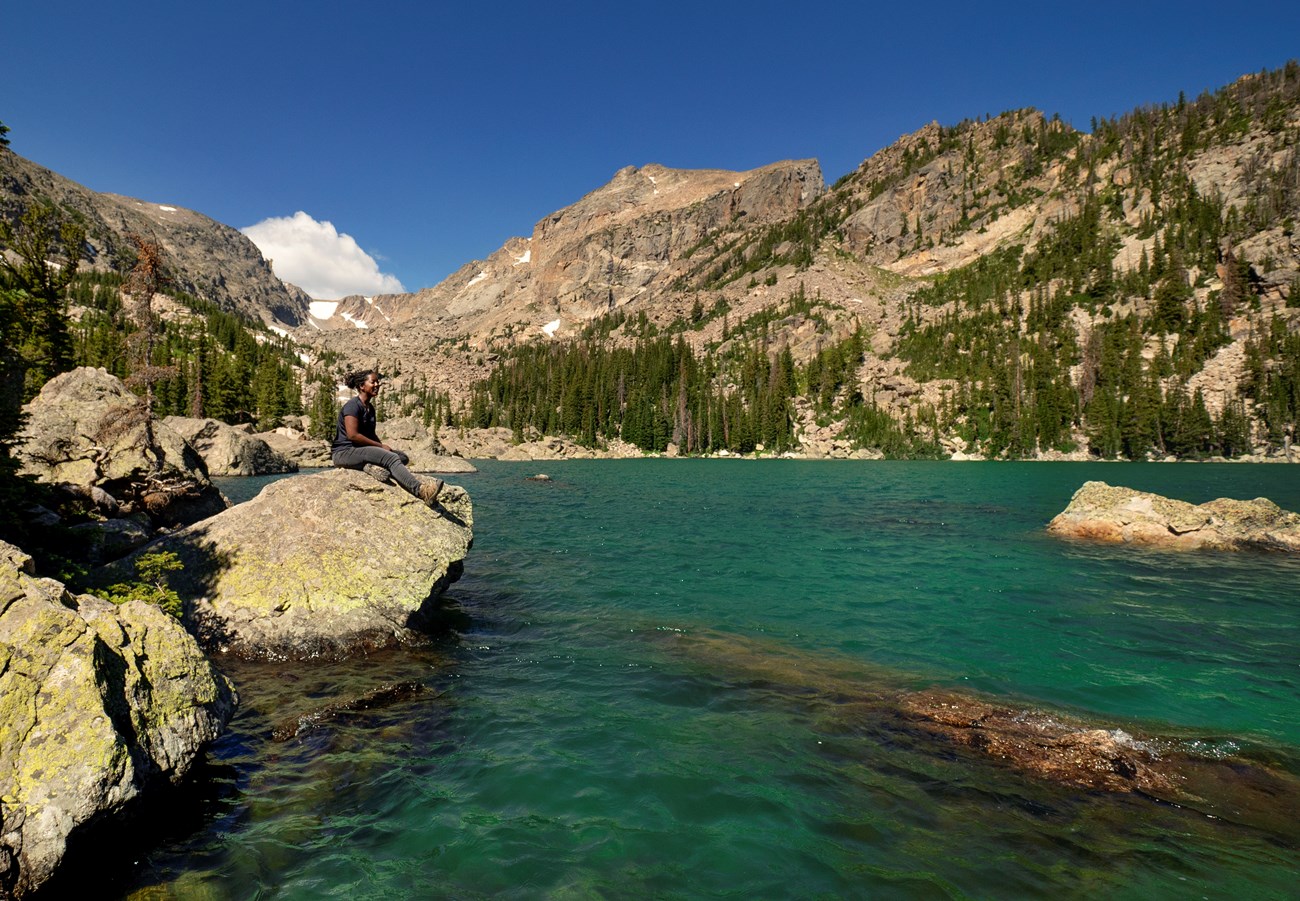
NPS 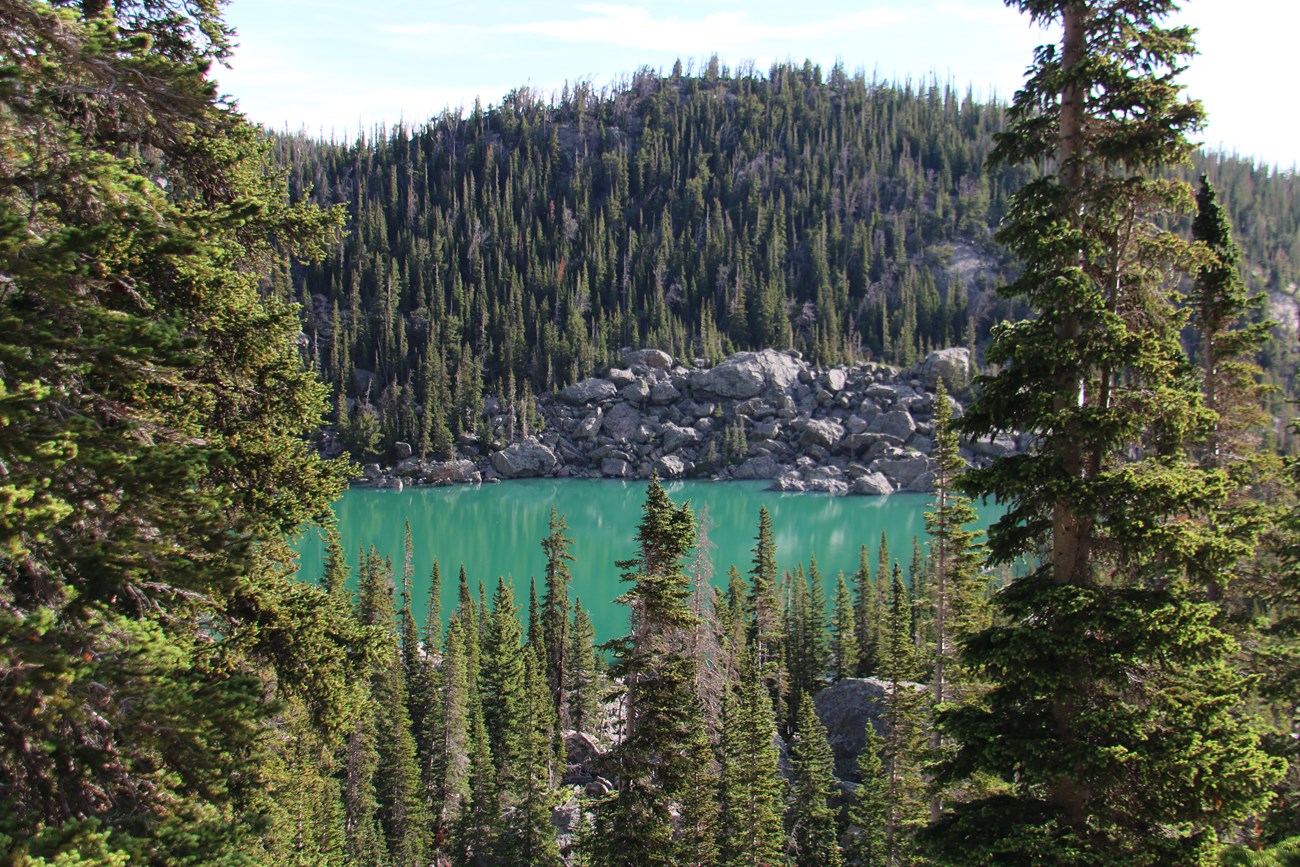
NPS |
Last updated: October 1, 2024
